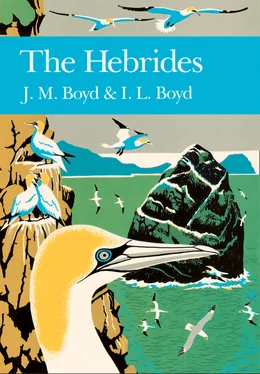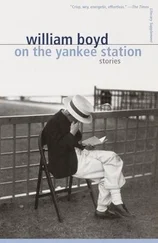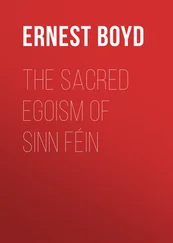The MT runs from the west of Shetland, entering the Scottish mainland at Loch Eribol and traversing the north-west Highlands roughly parallel to the coast, through Kylerhea and the Sleat peninsula of Skye and possibly through the Sound of Iona. To the west are the northern Inner Hebrides where the gneiss basement is evident in Tiree, Coll and Iona and is interrupted in Skye, Small Isles and St Kilda by massive emplacements of Tertiary lava, granite and gabbro. The Moine and associated thrusts occur from Loch na Dal to the Point of Sleat, and as far west as Broadford and Beinn an Dubhaich. The MT may just clip Rum at Welshman’s rock. To the east there is gneiss; to the west there is Torridonian sandstone and Durness limestone. Under the Sea of the Hebrides and the Minches, there are trenches in the gneiss basement filled with much younger sedimentary rocks. These have been derived from bygone mountains and are akin to the New Red Sandstones around Broad Bay in Lewis and to sedimentary strata of the wider shelf to the west of the Hebrides and around Orkney and Shetland, which may hold oil and gas. The C-SF, running from the Loch Scavaig in Skye through the Rum and Tiree Passages to the Skerryvore, is the western limit of a Mesozoic basin extending southward from Strathaird under Eigg and Muck to Mull.
Lastly, the OHT runs from the North Minch to beyond Barra Head along the east coast of the Outer Hebrides. It defines the main mountain chain of Barra and the Uists but northwards, in Lewis, it splits into a number of discontinuous planes before finally reaching the sea just north of Tolsta Head. To the east there are the sedimentary rocks in the submarine trench, while to the west is the Lewisian platform, interrupted in Harris and West Lewis by massive blocks of granite of Lewisian age.
Pre-Cambrian and Palaeozoic Rocks
These are mainly the Lewisian gneisses and granites, most of which were in existence 3,000 million years ago. In this vast span of time they have been changed. The granites, found mainly in Harris and west Lewis, are locally sheared and reduced to mylonite. South Harris is banded south-east to north-west with all the major rocks of the Lewisian series: gneiss, granite, gneiss veined with granite (all of acid character), metamorphic intermediate and basic igneous rocks, metasediments and anorthosite at Rodel. Metasediments are formed by the recrystalisation of sedimentary rocks, and occur at the north tip of Lewis, the south tip of Harris, and in the Uists and Benbecula. Substantial bands of mylonite (a slaty rock formed from crushed material along the OHT) occur in south-west Lewis and on the east coast of South Uist.
There were two distinct periods of metamorphic change, named after the districts of Sutherland where the original studies were done. The Scourian, 3,000 to 2,500 million years old, was followed by the Laxfordian, 2,500 to 1,400 million years old, and were separated by a period of crustal tension forming fissures into which a swarm of dykes were intruded. These are the Scourie Dykes which serve as distinct time-markers, separating Scourian from Laxfordian events. The Laxfordian period is marked by large-scale folding of the rocks. It concluded with the injection of the granites and pegmatites, 1,750 million years old, in Harris and Lewis, and the OHT, which was reactivated at the time of the Caledonian orogeny about 1,200 million years later, i.e. 400 million years ago (Smith and Fettes, 1979). None of the Torridonian, Moine, or Cambro-Ordovician rocks, which are well represented in the Inner Hebrides and the West Highland mainland, are present in the Outer Hebrides. The only sedimentary rocks are sandstones and conglomerates of Permian or Triassic age, 225 million years old, around Broad Bay in Lewis.
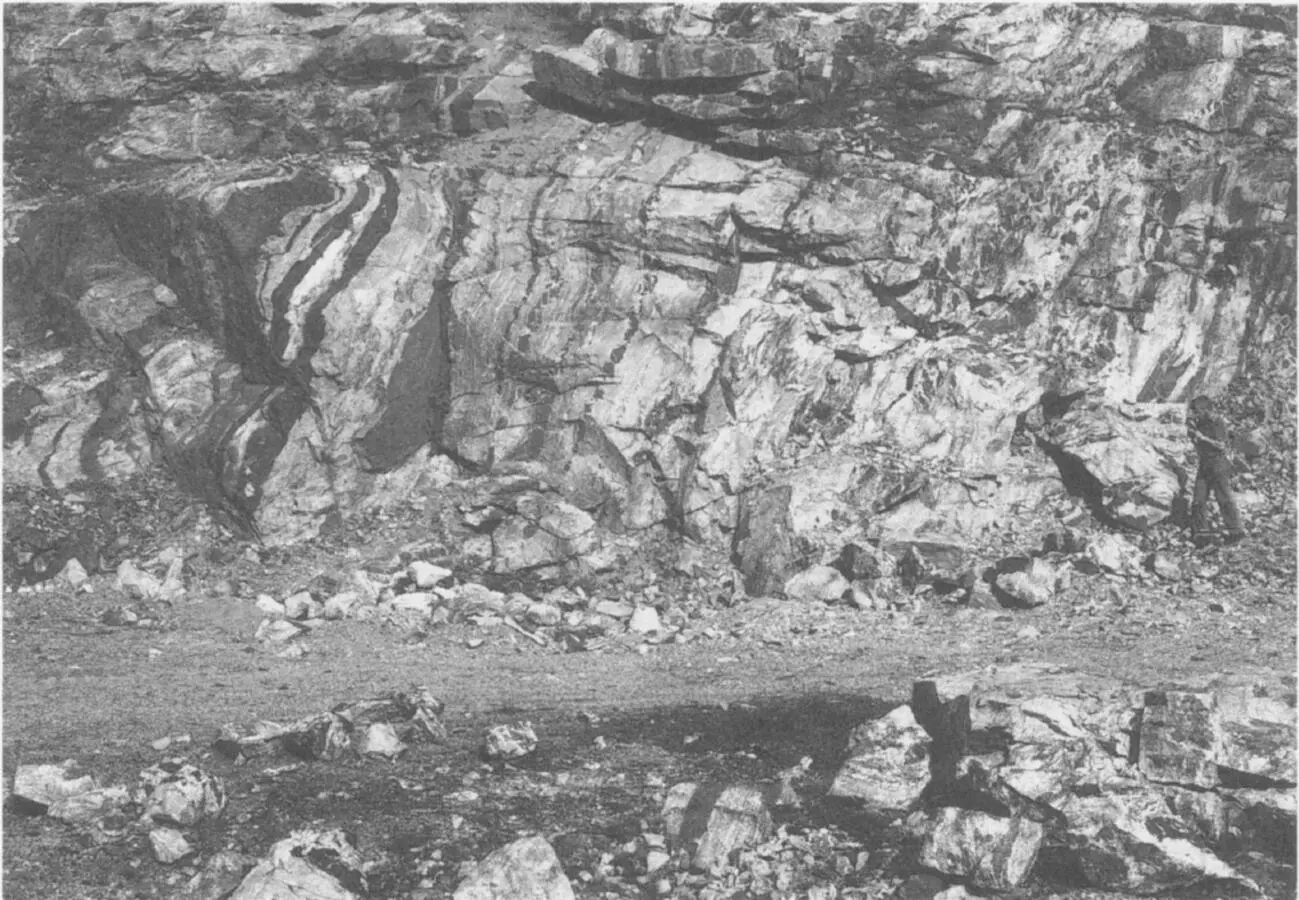
A quarry face in South Uist showing a section of Lewisian gneiss with characteristic banding of the minerals (Photo British Geological Surrey)
Among the Inner Hebrides the Pre-Cambrian rocks are widespread. The Lewisian complex occurs in Islay, Coll, Tiree, Skye, Raasay, and South Rona. Research on Rona has played a part in the elucidation of the Lewisian complex, and has revealed the oldest rocks in the British Isles—gneiss containing zircons older than 3,200 million years (Bowes et al., 1976). As in the Outer Hebrides, there are metasediments among the predominant gneisses in Coll, Tiree, and Iona. These include garnet and graphite gneisses and marbles. Torridonian sandstones occur in Handa, Summer Isles, Raasay, Scalpay, Skye, Soay, Rum, Iona, Colonsay, and Islay. These sandstones and shales lie unconformably upon the Lewisian gneiss to the west of the Moine Thrust, have their greatest development in Wester Ross, and continue in a band some 150km long and 15km broad south-east from Skye, under the sea, to the west of Coll and Tiree. There are several different groups of Torridonian characterised by their colour, grain-size and degree of deformation—‘Sleat’, Skye (3.5km thick), ‘Torridon’, Raasay (7km), ‘Colonsay’ (4km), ‘Bowmore’ Islay (4km), and ‘Iona’ (500m). Moine schists of similar age occur in Skye and Mull. Late Cambrian rocks, c. 550 million years old, are restricted to outcrops of pipe rock (quartzite with ‘pipes’ of worm burrows), serpulite grit and limestone in south-east Skye. Dalradian schists, which dominate the West Highland mainland south of the GGF, appear in the southern Hebrides. Quartzites, schists, limestones and slates occur in Islay, Gigha, Jura, Scarba, Garvellachs, Lismore, Luing and Seil. So far, no rocks of Silurian age have been found. Only small outcrops of Devonian (ORS) occur in Kerrera (130m thick) and Seil (5m) with contemporaneous lavas at Loch Don, Mull. The sole possible representatives of the Carboniferous period are lavas and sediments on Glas Eilein, Jura. Similarly, the only possible representative of the Permian period in the Inner Hebrides is a small pocket of boulder sediment on the Oa, Islay. New Red Sandstones in Skye, Raasay, Rum, and Mull are thought to be Triassic, but these continue under the sea and may include rocks of Permian age. Summary accounts of both the Pre-Cambrian and Palaeozoic rocks of the Hebrides are given in studies by Smith and Fettes (1979) and Anderton and Bowes (1983).
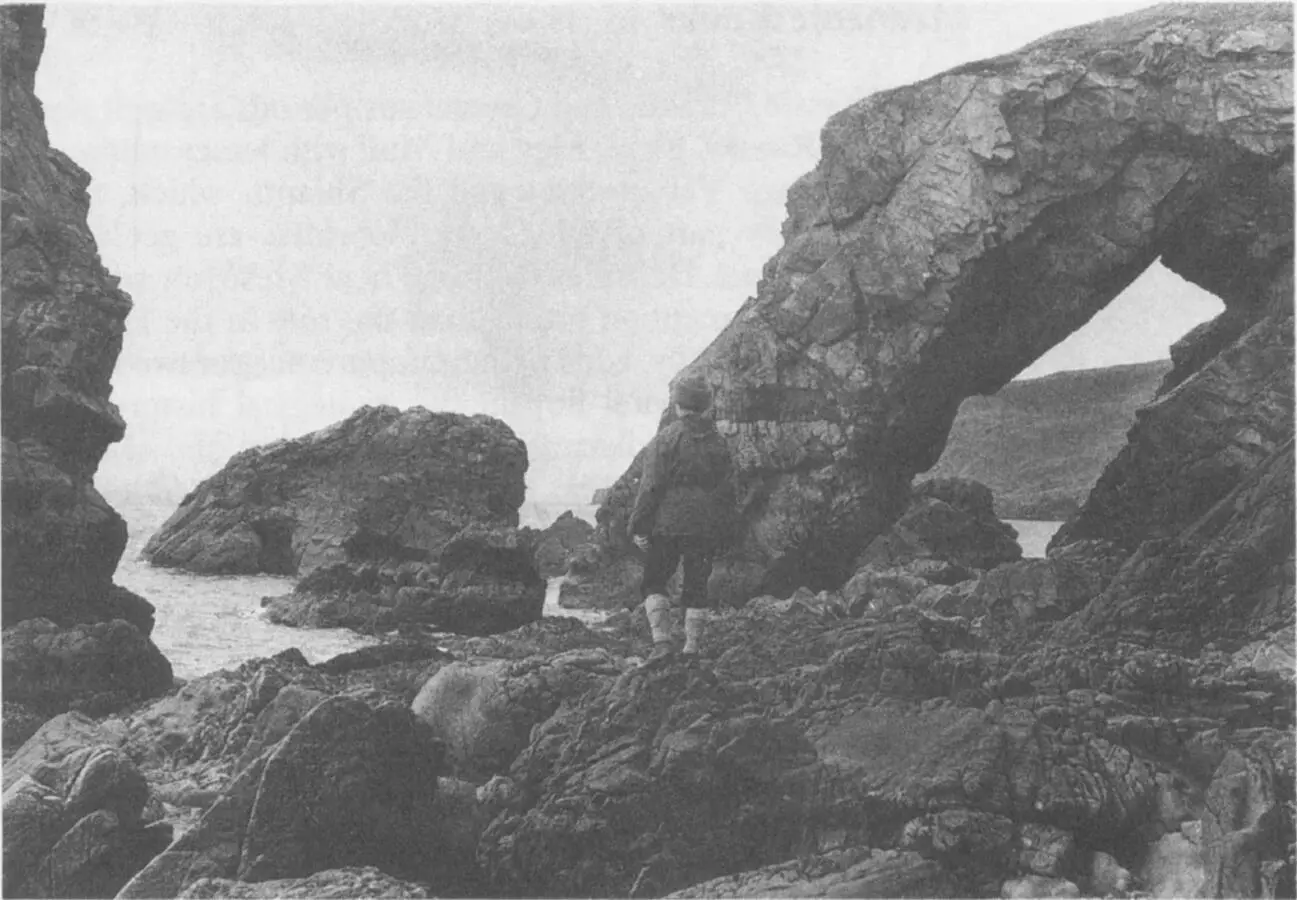
Torridonian sandstone eroded by the sea into freakish, dinosaur-like shapes on the north-west coast of Rum (Photo J. M. Boyd)
Mesozoic Rocks
The Triassic, Jurassic and Cretaceous periods are well represented in Raasay, Skye, Eigg and Mull with lesser outcrops in Rum, Scalpay, Pabay, Soay and the Shiants, which, though geographically part of the Outer Hebrides, are geologically part of the Inner Hebrides (See here). These Mesozoic rocks are, however, the exception rather than the rule in the Hebrides, which, paradoxically, adds to their importance for two reasons: firstly, they are a vital link in the geological history of the islands, joining the distant Palaeozoic period and the much more recent Tertiary era; secondly, they are predominantly lime-rich rocks which have a marked effect on the ecology of the islands in which they occur. The outcrops above sea-level generally are set unconformably upon the Pre-Cambrian-Paleozoic basement, and are overlain by the Tertiary volcanic rocks. Under the North Minch and the Sea of the Hebrides, these mesozoic rocks now fill deep basins, and are much more extensive than on the islands, which may hold only thin fringe outcrops on the margins of the submarine basins. Much of the research data from these potential oil-bearing basins is unpublished. However, the labelling of the Stornoway Beds as Permo-Triassic leads to the conclusion that these basins probably hold a New Red Sandstone series.
Читать дальше
